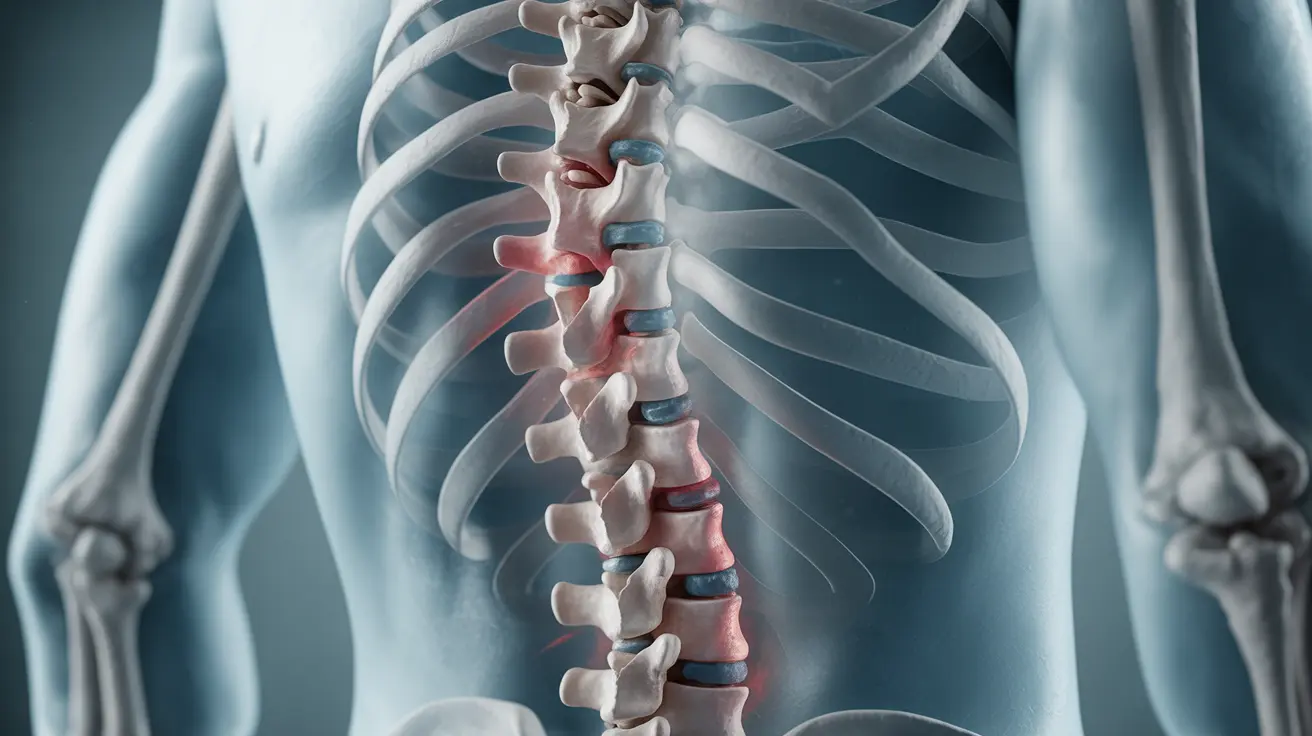Ankylosing spondylitis (AS) is a chronic inflammatory condition that primarily affects the spine and sacroiliac joints. Understanding its prevalence and impact is crucial for both healthcare providers and individuals who may be at risk for developing this condition.
This comprehensive guide explores how common ankylosing spondylitis is, its key symptoms, diagnostic approaches, and available treatment options. We'll also discuss genetic factors and preventive measures that can help manage this chronic condition.
Prevalence and Demographics of Ankylosing Spondylitis
Ankylosing spondylitis affects approximately 0.1% to 0.5% of the adult population worldwide. The condition typically develops in young adults, with most people experiencing their first symptoms between the ages of 17 and 45. Men are more commonly affected than women, with a ratio of about 3:1.
The prevalence of AS varies significantly across different ethnic groups and geographical regions. It is more commonly found in white European populations, though it can affect people of all racial and ethnic backgrounds.
Understanding the Genetic Connection
The HLA-B27 gene plays a significant role in ankylosing spondylitis. Approximately 90% of people with AS test positive for this genetic marker, though having the gene doesn't guarantee developing the condition. Only about 2-8% of people with HLA-B27 will develop AS.
Family History and Risk Factors
Having a first-degree relative with AS increases your risk of developing the condition. Environmental factors, alongside genetic predisposition, may contribute to its development. However, the exact triggering mechanisms remain under investigation.
Key Symptoms and Diagnosis
Early recognition of AS symptoms is crucial for proper management. Common signs include:
- Chronic lower back pain and stiffness
- Pain that improves with exercise but worsens with rest
- Morning stiffness lasting more than 30 minutes
- Fatigue and reduced spinal flexibility
- Potential involvement of other joints and organs
Diagnosis typically involves a combination of physical examination, imaging studies (X-rays, MRI), and blood tests, including HLA-B27 testing. Early diagnosis is essential for preventing long-term complications.
Treatment Approaches and Management
Modern treatment options for AS have significantly improved outcomes for many patients. The main treatment goals include:
- Reducing pain and inflammation
- Maintaining spinal mobility
- Preventing complications
- Improving quality of life
Treatment typically involves a combination of medications (NSAIDs, biologics), physical therapy, and regular exercise. Some patients may also benefit from complementary therapies like acupuncture or massage.
Prevention and Risk Reduction
While ankylosing spondylitis cannot be prevented entirely, several strategies can help reduce its impact:
- Regular exercise and maintaining good posture
- Smoking cessation
- Maintaining a healthy weight
- Regular medical check-ups, especially if you have risk factors
- Early intervention when symptoms appear
Frequently Asked Questions
1. What are the typical symptoms of ankylosing spondylitis and how is it diagnosed? Ankylosing spondylitis typically presents with chronic lower back pain and stiffness, especially in the morning or after periods of inactivity. Diagnosis involves physical examination, imaging studies (X-rays and MRI), and blood tests, including HLA-B27 testing.
2. How common is ankylosing spondylitis, and does it affect certain ethnic groups more frequently? AS affects approximately 0.1% to 0.5% of adults worldwide, with higher prevalence in white European populations. It's more common in men than women, typically developing in young adulthood.
3. Can the HLA-B27 gene predict if someone will develop ankylosing spondylitis, and what role does it play in the disease? While 90% of AS patients are HLA-B27 positive, having the gene doesn't guarantee developing the condition. Only 2-8% of HLA-B27 positive individuals develop AS, suggesting other factors contribute to disease development.
4. What are the current treatment options for ankylosing spondylitis, and how effective are they in managing symptoms? Treatment options include medications (NSAIDs, biologics), physical therapy, and exercise. These approaches can effectively manage symptoms and slow disease progression for many patients when used consistently.
5. Is there any way to prevent or reduce the risk of developing ankylosing spondylitis, especially if you have a family history or are HLA-B27 positive? While AS cannot be prevented entirely, maintaining regular exercise, good posture, healthy weight, and not smoking can help reduce risk and impact. Early intervention when symptoms appear is crucial for better outcomes.




